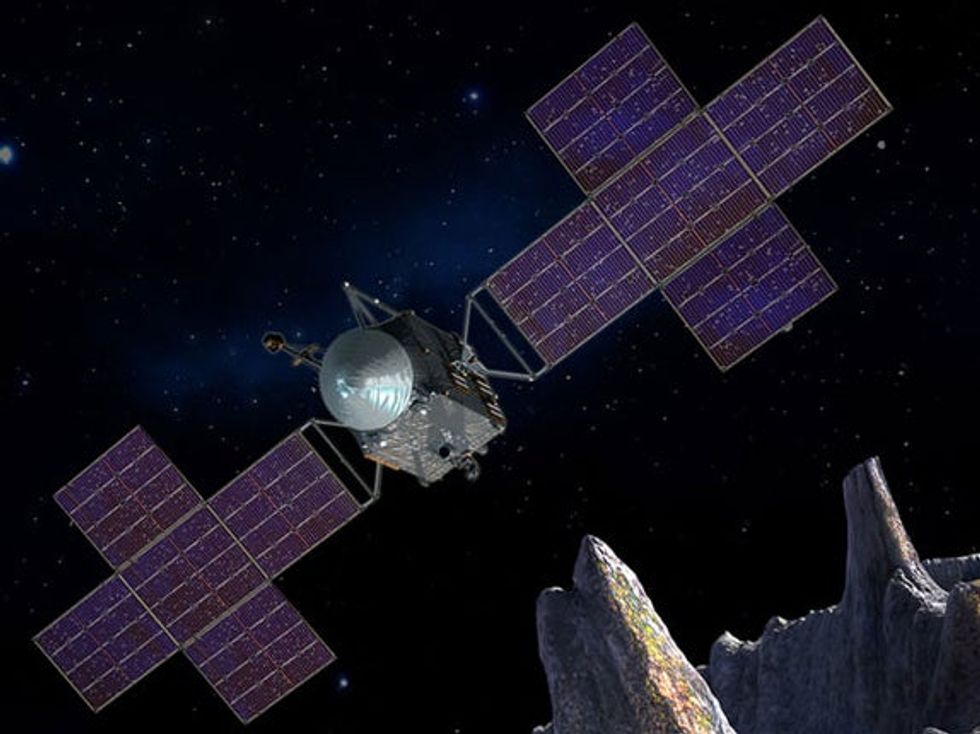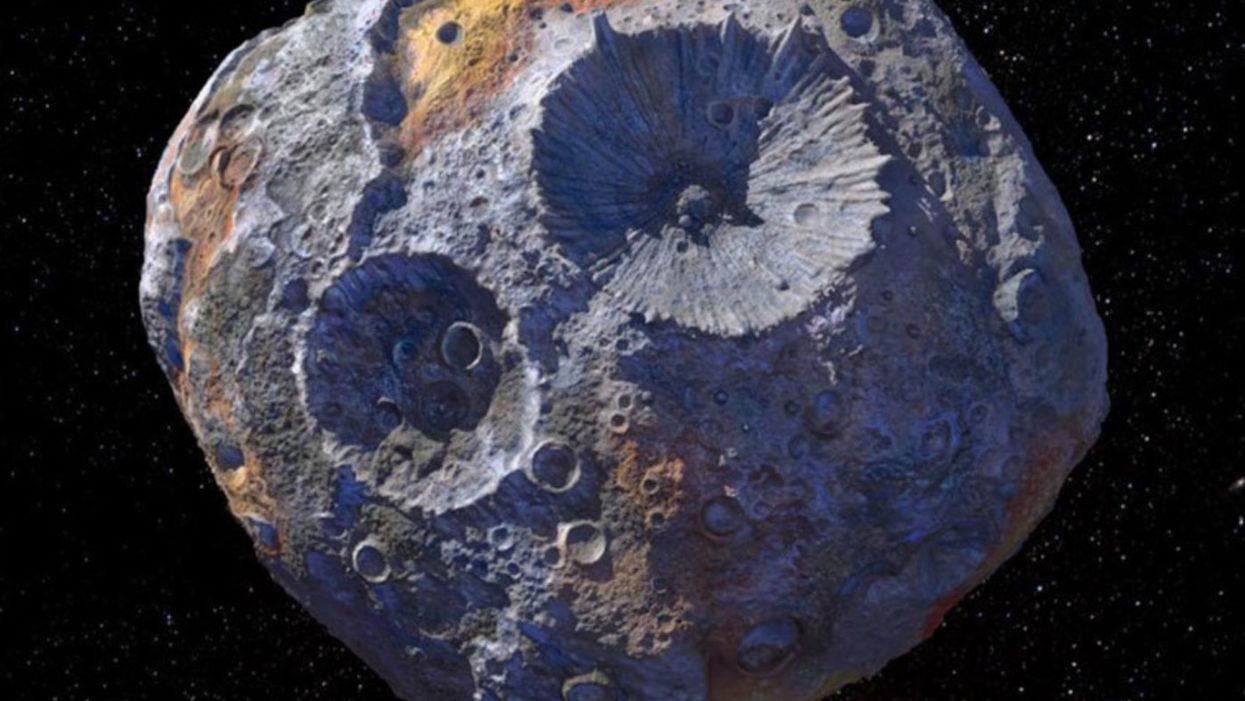NASA is launching a mission to study an asteroid worth more than $10,000 quadrillion – which is said to contain so much precious metal that everyone on Earth would be a billionaire if its precious cargo was divided among mankind.
Psyche 16 - first spotted back in March 1852 - is a 124 mile-wide space rock that will be the primary focus of NASA’s project, which is was set to launch in August 2022.
The spacecraft would have arrived at the asteroid four years later in early 2026.

But it's hit delays because of the need to review software. The probe may launch in 2023 or 2024 instead, or be canceled altogether.
If it does go ahead, it will be the first exploration into a world of metal rather than rock and ice. NASA said, “Unlike most other asteroids that are rocky or icy bodies, scientists think the M-type (metallic) asteroid 16 Psyche is comprised mostly of metallic iron and nickel similar to Earth.”
The asteroid is nestled between Mars and Jupiter. According to the Daily Mail, it is believed to be the “remnants of a protoplanet destroyed by ‘hit-and-run collisions’ when the solar system formed.”
A team in California has since created a new temperature map to help NASA understand the asteroid’s surface properties. Usually, infrared images of a space rock only provide a fragment of data equivalent to a single pixel, but researchers could get 50-pixel resolution.
“The findings are a step toward resolving the mystery of the origin of this unusual object, which has been thought by some to be a chunk of the core of an ill-fated protoplanet”, researchers from the recent study said.
They discovered that its surface was made up of at least 30 per cent metal, with further rocks on the surface containing metal grains.
Caltech’s Katherine de Kleer, assistant professor of planetary science and astronomy, added: “We think that fragments of the cores, mantles, and crusts of these objects remain today in the form of asteroids. If that’s true, it gives us our only real opportunity to directly study the cores of planet-like objects.”














